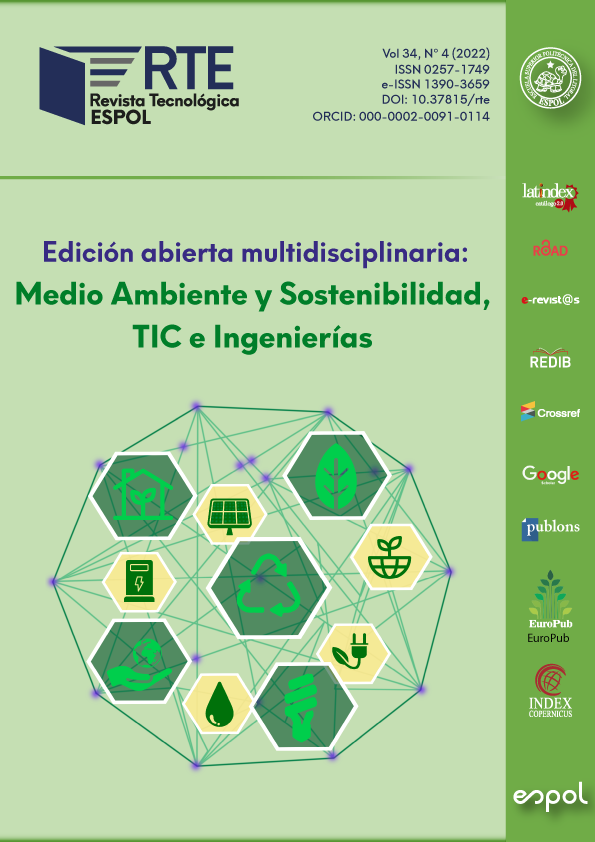La investigación se realiza en una zona del cantón Naranjal y para este estudio participan 10 fincas aleatoriamente seleccionadas. Estas fincas se dedican a la producción del cacao nacional o fino de aroma. Adicionalmente, en estos lugares, se desarrollan las observaciones y mediciones destinadas a caracterizar morfológicamente este cultivo de cacao originado a partir de variedades de los tipos Forastero y Trinitario. Para su análisis se aplicaron parámetros de estadística descriptiva a un grupo de variables morfológicas como: peso, largo y ancho del fruto, rugosidad, grosor y coloración del pericarpio, y número de semillas por fruto. Se tomaron 10 mazorcas. Y de cada mazorca se describieron 5 semillas, de estas se tomaron determinaciones de variables como peso, largo ancho y espesor de la semilla, peso de la pulpa y testa. A más de ello, se escogieron 10 flores al azar de cada planta para medir sus estructuras. Luego de analizar cada una de estas variables de forma individual, se aplicó un análisis de regresión múltiple, para obtener información del grado de participación de las variables. Finalmente, se obtuvo variables de coloración de peso, forma y rugosidad del fruto para separar las plantas evaluadas por características fenotípicas similares, las que se sometieron a un ANDEVA para evidenciar cuál de los grupos tenía mayor variabilidad estadística. Se encontró una mayor participación del tipo forastero y menor del trinitario. Se constató que los caracteres de mayor importancia se encuentran en el fruto.

Esta obra está bajo una licencia internacional Creative Commons Atribución-NoComercial 4.0.
Referencias
Águila L, Alfonso M., Jimenez C. y Mesías M., 2012. Caracterización morfológica y sensorial del cacao nacional (teobroma cacao) a nivel de fincas en el cantón las naves, provincia bolívar. Tesis De Grado. Repositorio Universidad Estatal de Bolivar. Enlace del recurso http://dspace.ueb.edu.ec/handle/123456789/1031. Rights openAccess
Arguello M., 2001. Tipos de Cacao. Tesis, Agroedit, Cuenca.
Ayestas, E., et al. 2013. Caracterización de árboles promisorios de cacao en fincas orgánicas de Waslala, Nicaragua. Agroforesteria en las Americas: 1-8.
Bartley B.G.D., 2000. An Explanation of the Meaning of the Term and its relationship to the lntroductions from Ecuador. B.G.D.
Braudeau, J. 2000. «El cacao. Colección Agricultura Tropical.» Barcelona ES. (Editorial Blume.): 304 p.
Dejean, M. (1984). Floración del cacao. Boletín informativo del Cacao, San José, CR, 1(3), 1-3.
End MJ, Daymond AJ, Hadley P, editors. 2010. Technical guidelines for the safe movement of cacao germplasm (Revised from the FAO/IPGRI Technical Guidelines No. 20). Global Cacao Genetic Resources Network (CacaoNet), Bioversity International, Montpellier, France. ISBN 978-92-9043-871-7
Enríquez, G., 2004. Cacao orgánico: Guía para productores ecuatorianos. Instituto Nacional de Investigaciones Agropecuarias, Quito: Quito Ediciones, segunda edición, 360p.
Enríquez, G., & Soria, V. (1967). Selección y estudio de los caracteres útiles de la flor para la identificación y descripción de cultivares de cacao. Cacao, (Costa rica) 12(1): 8-16.
Franco, T. L. e Hidalgo, R. (eds.). 2003. Análisis Estadístico de Datos de Caracterización Morfológica de Recursos Fitogenéticos. Boletín técnico no. 8, Instituto Internacional de Recursos Fitogenéticos (IPGRI), Cali, Colombia. 89 p.
MAG/IICA. 2001. Identificación de mercados y tecnología para productos agrícolas tradicionales de exportación. Quito, Ecuador. 45 p.
Mosquera, B. 2015. Importancia económica del cacao orgánico (Theobroma cacao) en el Ecuador. Tesis de pregrado. Universidad de Babahoyo. http://dspace.utb.edu.ec/bitstream/handle/49000/9226/E-UTB-FACIAG-ING%20AGRON-000302.pdf?sequence=1&isAllowed=y
Motomayor J.C., Risterucci A.M., López P.A., Ortiz C.F., Moreno A.Lanaud C. 2002. Cacao domestication I: The origin of the cacao cultivated by the Mayas. Heredity 89, 380–386.
Municipalidad de Naranjal, 2010. Estadísticas Agropecuarias. Naranjal. Guayas, Ecuador.
Ostendorf, F. W. (1965). Identifying characters for cacao clones crop. Reuniao do Comite Técnico Interamericano do Cacau, VI Salvador, Bahía, Brasil, 89-110.
Peña Monserrate, G.R. (2003). Caracterización morfológica de 57 accesiones de cacao (Theobroma cacao L.) tipo nacional del banco de germoplasma de la Estación Experimental Tropical Pichilingue. (Tesis de Ingeniería). Universidad Técnica de Manabí, Facultad de Ingeniería Agronómica, Escuela de Agronomía, Manabí,.Ecuador.
Pérez, A. 1996. Variedades de Cacao y sus Características. Cali, Colombia: Ed. Lucas.
Pesantez, A. 2014. Caracterización morfológica y de rendimiento de 26 clones de cacao (theobroma cacao l.) considerando características de 6 genotipos identificados en la zona de Yaguachi provincia del Guayas.2014tesis de ingeniero agrónomo. Guayaquil. Tesis de pregrado Repositorio Universidad Agraria del Ecuador. https://cia.uagraria.edu.ec/index.php
Pound, F. (1933) Criterios y Métodos de Selección en Cacao. Segundo Informe Anual de Investigaciones sobre Cacao, 27-29.
Quiróz J.G. 1997. Recolección de Genotipos y Establecimiento de un Banco de Germoplasma de Cacao Nacional. Estación Experimental Tropical PichilingueINIAP Boletín Técnico 75.
Quiroz, J. 2009. La producción de cacao, programa de capacitación a facilitadores y agricultores en la cadena de cacao. Quito Ecuador: Consorcio Camaren.
Romero C, et al 2010. Identificación varietal de plantas de cacao. Tecnológica ESPOL, 2: 5.
Williams, J.T.; Damania, A.B. 1981. IPGRI. (International Plant Genetic Resources Institute), Industrial Crops: Cacao, Coconut, Pepper, Sugarcane and Tea. 50 p.







